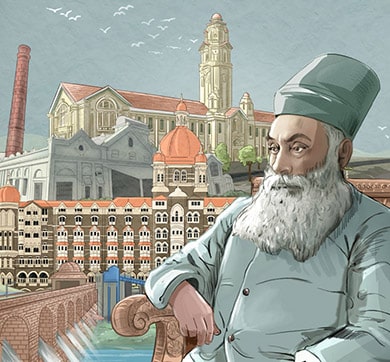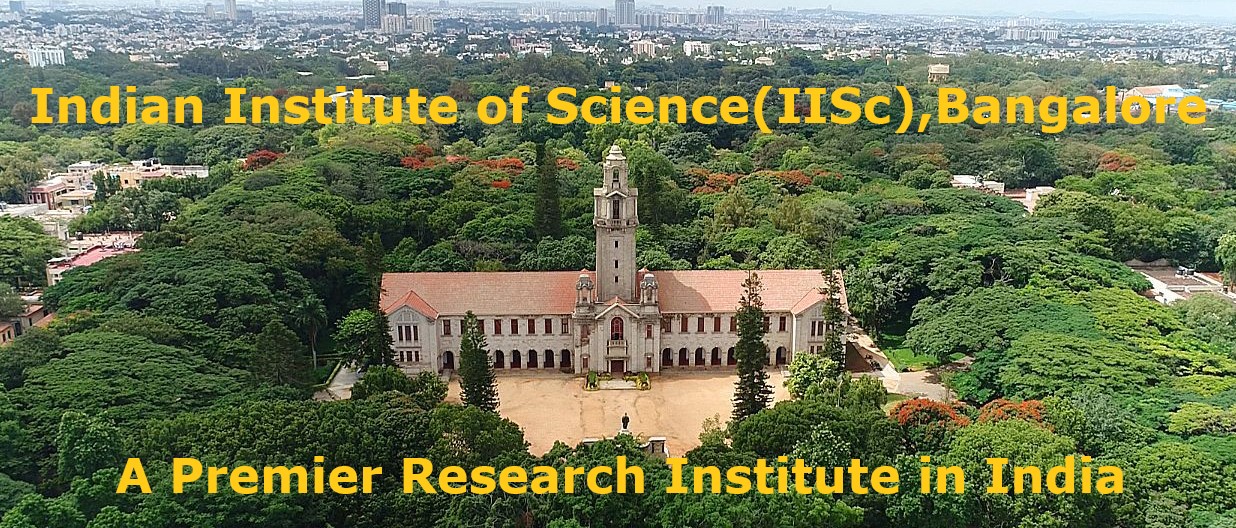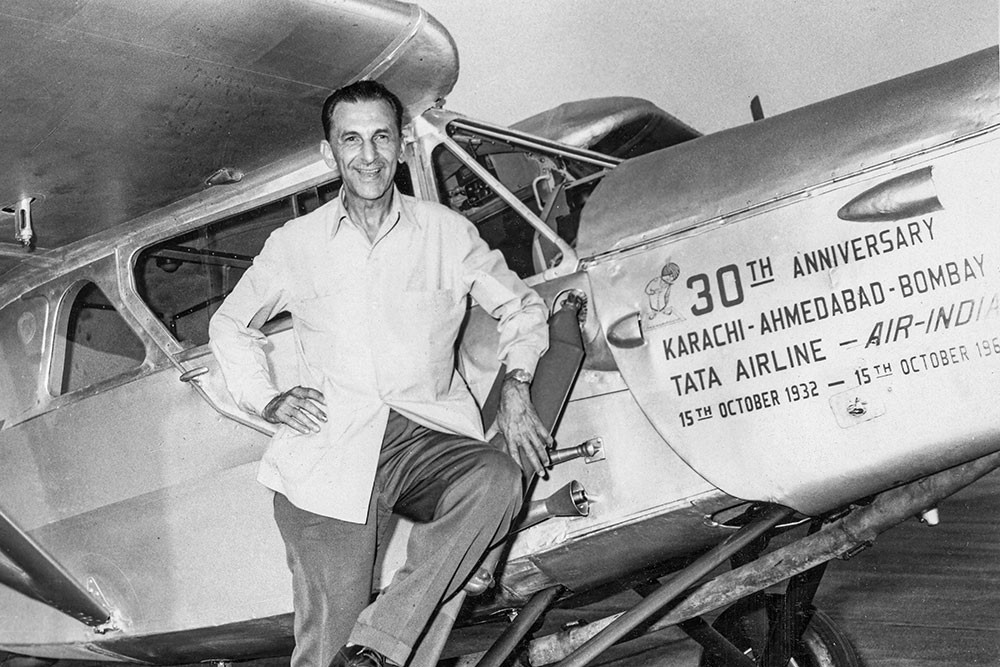How Tata's Was Ahead of its Time?
For thousands of years, India was a highly industrialized country, known for its skilled production of goods that not only met its own needs but were also exported worldwide. The country had a well-established industrial base, particularly in the power-driven cotton textile industry, where pioneers like Jamsetji Tata played a significant role. This sector was already thriving before J.N. Tata entered the scene. He understood the full scope of the industrial revolution in the West and recognized its transformative potential for India. Unlike others who focused primarily on political strategies, Tata saw that India’s true freedom would come from industrialization, alongside the infusion of modern science and technology into the country’s economy.
Jamsetji Tata’s vision extended beyond business, as he laid the foundation for India’s industrial development by establishing the Tata Group. His dream was of a prosperous, industrialized India, built on the three key pillars of economic progress: steel, electric power, and technical education combined with research. He focused on creating institutions and industries that would fuel the nation’s growth, ensuring that industrialization would play a pivotal role in shaping India’s future.

The Tata Group’s visionary approach was ahead of its time, establishing initiatives that shaped the future of the nation. Their forward-thinking mindset, focused on the collective good, demonstrated how investing in the future could create lasting change. By prioritizing long-term goals over short-term gains, they paved the way for remarkable developments that continue to benefit the country. Each initiative reflected a commitment to progress and prosperity for all. The lessons from Tata’s foresight offer valuable insights into how impactful and transformative thinking can shape an entire nation.
Here’s the table of contents:
- Founding the Tata Group (1868)
- Promotion of Industrialization
- Inception of Tata Steel (TISCO, 1907)
- Creation of Institutions
- Focus on Employee Welfare
- Focus on Hospitality (The Taj Mahal Hotel):
- Establishment of Tata Airlines 1932 (later Air India)
- Philanthropic Focus
- Pioneering Innovations
- Conclusion
Founding the Tata Group (1868)
Born in 1839 in Navsari, Gujarat, Jamsetji Nusserwanji Tata was raised in a family of Parsi Zoroastrian priests. After completing his education in Mumbai, he joined his father’s trading firm, gaining valuable experience in the commodities market. In 1863, he traveled to England to expand his father’s business, where he developed an interest in the textile industry. He believed that India could produce high-quality cotton and compete with the world’s leading textile producers. Despite being under British colonial rule, with an economy structured to benefit British industries, Tata faced skepticism and resistance from both British and Indian communities but remained resolute in his vision.
In 1868, Jamsetji founded a trading company, Tata & Sons, which laid the foundation for what would eventually become the Tata Group. Initially dealing in cotton, he established the Empress Mill in Nagpur in 1874. This mill was a pioneering venture in the Indian textile industry, utilizing advanced technology to produce high-quality cotton at competitive prices. Tata’s goal was to build industries in India capable of competing globally and reducing the country’s dependence on imports.
Promotion of Industrialization
Jamsetji Tata envisioned India’s first steel plant at a time when the country was entirely dependent on imports. This led to the establishment of Tata Steel in 1907, marking the first large-scale steel plant in India. He also initiated the development of India’s first hydroelectric power plants under Tata Power, recognizing the vital role of energy in driving industrial and economic growth. Additionally, he built the iconic Taj Mahal Palace Hotel in Mumbai in 1903, not just as a business venture, but as a symbol of Indian pride.
JRD Tata, continuing his legacy, expanded the Tata Group into diverse sectors such as chemicals, energy, automobiles, and information technology. He recognized the potential of India’s IT industry early on and played a key role in setting the stage for the country’s technology-driven economy. His visionary leadership further solidified the Tata Group as a catalyst for India’s industrial and technological progress.
Inception of Tata Steel (TISCO, 1907)
Jamsetji Tata envisioned a self-reliant India, recognizing that steel production was fundamental to the country’s industrialization. His meticulous planning included studying global steel industries, particularly those in the U.S. and Europe. His son, Dorabji Tata, carried forward this dream, collaborating with global experts like American geologist Charles Page Perin to ensure technical expertise. After extensive exploration, they chose Sakchi (later Jamshedpur) in present-day Jharkhand due to its proximity to key resources such as iron ore from Odisha and coal from Jharia. The nearby Subarnarekha and Kharkai rivers provided a steady water supply, while the Bengal-Nagpur Railway ensured easy transportation. Public shares were issued, and contributions from Indian industrialists, zamindars, and patriotic citizens helped support the project, with the Swadeshi movement further encouraging Indians to back indigenous industries.

The Tatas recruited skilled personnel from abroad, including metallurgists and engineers from the U.S. and Europe, while also developing training programs for local workers to build a competent indigenous workforce. They undertook the immense task of building infrastructure from scratch, developing roads, railways, and housing colonies for employees. Jamshedpur was designed as a model industrial city, offering modern amenities like schools, hospitals, and recreational facilities to ensure a high standard of living for its workers. Even in its early stages, Tata Steel focused on sustainability, adopting practices like efficient use of raw materials and waste recycling. Over time, the company became a pioneer in environmentally friendly technologies, such as energy-efficient blast furnaces and waste heat recovery systems. Under J.R.D. Tata’s leadership, Tata Steel introduced progressive social welfare measures, including an eight-hour workday, maternity leave, and provident funds, long before they became legal requirements in India.
Creation of Institutions
Jamsetji Tata believed that India’s future would depend on its ability to research, innovate, and develop in scientific knowledge, industrial capacity, and social welfare, especially after independence. He saw education as the key to uplifting the country from colonial subjugation and creating a brighter future for its people. The institutions he founded, such as the Indian Institute of Science (IISc) in 1909, were designed to serve as centers of excellence in education and research, producing a new generation of leaders, scientists, and social reformers to drive national progress. His vision continued to shape Tata institutions even after his death, under the leadership of his successors, such as his son Sir Dorabji Tata and the renowned industrialist J.R.D. Tata.

The Tata Group also played a pivotal role in addressing India’s social and scientific challenges through the establishment of pioneering institutions. The Tata Institute of Social Sciences (TISS), founded in 1936 by Dr. Clifford Manshardt under Sir Dorabji Tata’s guidance, was created to address India’s social issues, especially the welfare of marginalized communities. In 1945, the Tata Institute of Fundamental Research (TIFR) was established under J.R.D. Tata’s patronage and the leadership of renowned physicist Dr. Homi J. Bhabha. TIFR was crucial in advancing India’s nuclear program and scientific research. These visionary initiatives laid the groundwork for India’s future development and progress.
Focus on Employee Welfare
Tata Steel built a model industrial township that provided workers with essential amenities such as quality housing, healthcare, and educational facilities, setting a standard for future industrial growth. In 1912, the Tata Group helped establish the Tata Workers Union, giving workers a platform to voice their grievances. The union advocated for fair wages, improved working conditions, and better treatment of employees. Additionally, J.R.D. Tata introduced employee pension plans and gratuity, concepts that were unheard of in Indian industry at the time, ensuring that workers had a safety net even after retirement or during economic challenges.
J.R.D. Tata also prioritized education by setting up institutions like the Tata Institute of Social Sciences (TISS) in 1936, providing training and academic opportunities for workers and their families. Despite facing challenges such as poor working conditions, lack of labor laws, resistance to change, and socio-political unrest, his visionary leadership and progressive policies ensured that workers were treated with dignity, paid fairly, and provided with opportunities for growth. These initiatives set a benchmark for corporate responsibility and fostered strong employee loyalty. J.R.D. Tata’s actions serve as a testament to his commitment to the well-being of his employees.
Focus on Hospitality (The Taj Mahal Hotel):
The story of the Taj began with Jamsetji Tata’s frustration when he was denied entry to a European hotel in Mumbai because of his ethnicity. This incident sparked a vision in him to create a hotel where people from all walks of life, regardless of their race or nationality, would feel welcome. Driven by this dream, he built the iconic Taj Mahal Palace Hotel in 1903, not only as a business venture but as a symbol of Indian pride. It was the first hotel in India to offer electricity, elevators, and modern sanitation.
Designed by British architect S.B. N. Halls, the Taj Mahal Palace Hotel blended Indian and Western architectural influences. Today, it is part of Taj Hotels Resorts and Palaces, a prestigious brand under the Tata Group. The brand has expanded globally, operating numerous luxury hotels across India and other countries, continuing Jamsetji Tata’s legacy of excellence and hospitality.
Establishment of Tata Airlines 1932 (later Air India)
The journey of Tata Airlines began with J.R.D. Tata’s fascination with aviation. In the 1930s, J.R.D. Tata, an aviator himself, recognized the potential of air transport for India’s growth and connectivity. The first significant step toward creating Tata Airlines was when J.R.D. Tata began operating an airmail service in India. Tata expanded his aviation services to include passenger flights, which led to the establishment of Tata Air Services.

By 1938, Tata Air Services had evolved into a full-fledged airline and was renamed Tata Airlines. In 1953, Air India was nationalized when the Indian government passed the Air Corporations Act, taking over the operations of Tata Airlines (which had become Air India) and converting it into a state-owned enterprise. J.R.D. Tata, the founder of the airline, played a pivotal role in its early success but was disheartened by the government’s move, as it meant the loss of control over the airline he had built. Despite his reservations, J.R.D. Tata continued to serve as Air India’s chairman for several years.
Over time, the airline faced challenges such as financial mismanagement, competition, and changes in leadership. Today, under Tata Group’s ownership once again, Air India is focusing on modernization, revitalizing its fleet, improving customer service, and expanding its global presence to reclaim its legacy as a leading international airline.
Philanthropic Focus
The vision of philanthropy within the Tata family began with the group’s founder, Jamsetji Tata, who believed that businesses should contribute to society’s welfare. A significant portion of the Tata Group’s profits was directed toward charitable trusts, a unique and impactful approach to wealth redistribution that emphasized the importance of giving back to society. Some notable contributions include:
- Indian Institute of Science (IISc): Founded in 1909, IISc is one of India’s premier research institutions.
- Tata Memorial Centre: Established in 1941, it is one of India’s leading cancer care centers.
- Tata Trusts: One of the oldest philanthropic organizations in India, Tata Trusts continues to make significant contributions in sectors like healthcare, education, rural development, and disaster relief.
- Tata Housing and Rural Development: The company initiated numerous housing projects and rural development programs aimed at improving living conditions for underserved communities.
- Tata’s Response to Natural Disasters: The group has been consistently involved in relief efforts during natural disasters, such as the 2001 Gujarat earthquake and the 2004 tsunami.
- Water Conservation and Renewable Energy Initiatives: The Tata Group has invested in water harvesting and solar energy projects to ensure sustainability.
Pioneering Innovations
J.R.D. Tata made significant investments in hydroelectric power generation through Tata Electric Companies at a time when electricity was scarce in India. This initiative provided clean energy to industries and homes, fostering growth in Mumbai and surrounding areas. In the late 20th and early 21st centuries, the Tata Group began acquiring global companies like Tetley, Corus, and Jaguar Land Rover—long before globalization became a trend for Indian companies. These acquisitions helped establish Tata as a global player and brought international recognition to Indian enterprises.

J.R.D. Tata played a crucial role in India’s development by expanding into multiple industries, bringing technology and knowledge to the country. He supported data-driven planning and built companies that provided statistically backed insights to both the Tata Group and the government. As an advocate for population control, he supported family planning initiatives to address India’s growing population challenge. He also aimed to build a manufacturing hub for avionics in India, but his plans were hindered by a lack of support under British rule. In 1945, Tata Engineering and Locomotive Co. Ltd. (now Tata Motors) was established, initially manufacturing locomotives and heavy engineering products. The company later expanded to include commercial vehicles, such as trucks and buses.
Conclusion
In a country with such a rich history, there is much to learn from the past. However, we still face numerous challenges—corruption in our systems, poor labor laws that allow exploitation, and a government that focuses on immediate returns rather than long-term growth. The emphasis remains on taxes generated by car sales instead of improving public transportation. Our education system continues to follow the outdated British-era model, neglecting research and exploration. Bureaucratic inefficiencies grow, and politics continues to divide people on the basis of caste, religion, language, and region.
These problems can be solved by adopting a mindset of investing in the future, rather than seeking short-term gains. The rise of the Tata Group, which has not only contributed to India’s industrial growth but also engaged in significant charity, serves as a powerful example of what can be achieved with a forward-thinking, futuristic vision. It shows that by focusing on long-term development and the collective good, we can unlock the potential to shape a prosperous and united nation.
